This post may contain affiliate links. For more information, you can see our disclosure here.
The materials we use to cook our food can play an important role in the health of our bodies. That’s why it’s important to choose low or non toxic cookware options. When heated to high temperatures, heavy metals and toxins from our cookware can be harmful to our health.
To get the best results in your home cooking, avoid any non-stick cookware which includes Teflon, PFOAs, PTFEs and other toxic chemicals that are harmful to humans and animals. Instead choose non toxic or low toxic options ~ we have a comprehensive list included for you below.
Avoid aluminum. Aluminum is a favorite among many for cooking as it is light weight and offers even heat distribution, but recent studies suggest that exposure to aluminum might be linked to Alzheimer’s and neurological issues. So, avoiding aluminum foil and aluminum in your cookware and bakeware is essential for clean cooking. The one exception is when it is sandwhiched between layers of stainless steel or other low toxic materials.
In our house, we have a combination of stoneware, stainless steel, cast iron, and glass cookware. Each material has its own unique pros and cons.
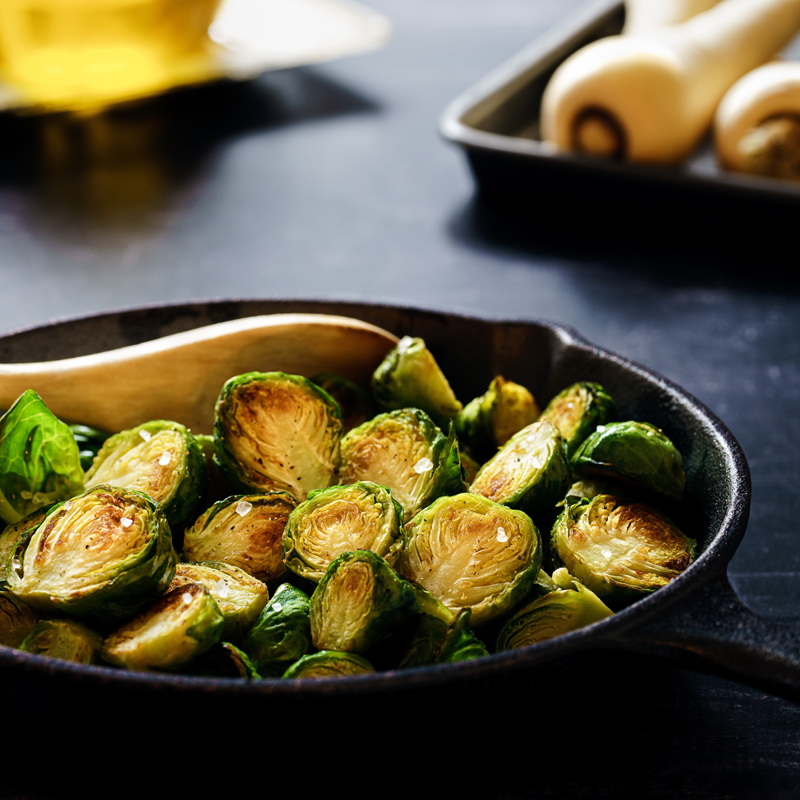
Cast Iron
Cast iron is a great option for most cooking including high heat but can be too heavy for some people. They also require regular seasoning and should not be washed with soap as the iron will rust.
Pros
- Good for high heat
- Durable
- Low or Non-toxic
- Natural
Cons
- Heavy
- Need to keep seasoned with oil
- Can’t wash with soap
What We Use
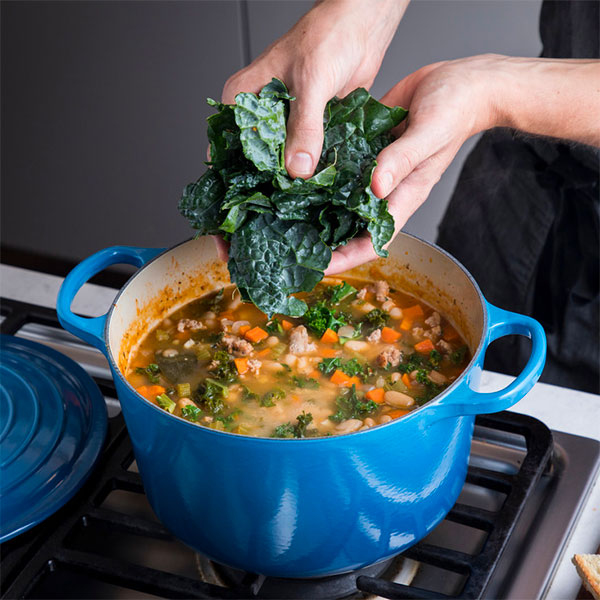
Enameled Cast Iron
If you are worried about rust getting in your food or don’t want to keep seasoning your cast iron, enameled cast iron cookware might be a good option. They have a glass-like coating that prevents rust. Enameled cast iron are great for soups or liquids but I find foods like eggs can really stick unless you use low heat.
Pros
- Low or no toxicity
- Easy to clean
- Use less oil
- Great for soups or liquids
Cons
- There are a lot of different ceramic options out there and it’s hard to tell which is best
- Can be heavy if you choose enameled cast iron
- Cannot use metal utensils
- Not suitable for high heat as food can stick and burn
What We Use
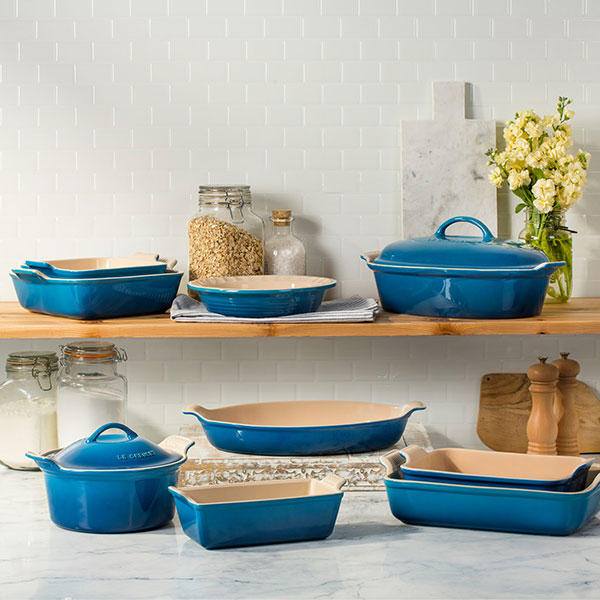
Stoneware
Stoneware is one of the safer options for baking. Made from natural materials, stoneware has been around for a very long time. Make sure to buy a high quality brand or from someone you trust as some stoneware may contain traces of natural metals.
Pros
- Low or no toxicity
- Easy to clean
- Great for baking
Cons
- Can be heavy
- Can crack or break if not handled with care
What We Use
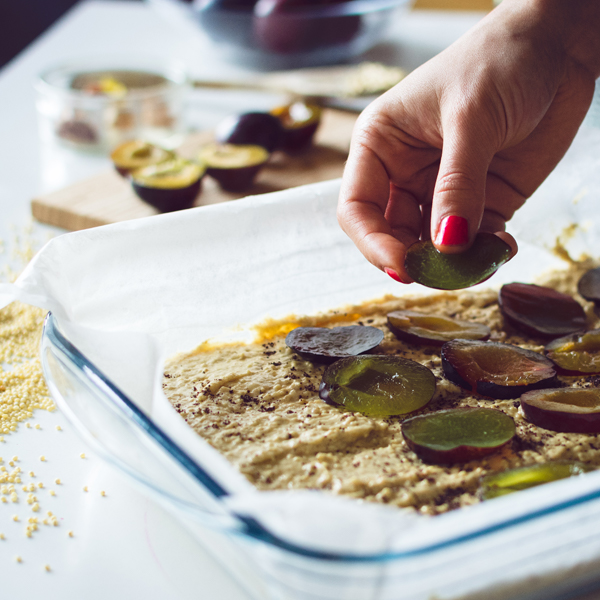
Glass Bakeware
Glass is one of the safest options for both cooking and baking. We use glass for baking foods like enchiladas, lasagna, desserts, and bread. They are currently known to be very low or non toxic cookware.
Pros
- Very low or non-toxic
Cons
- Can be fragile
- Can be difficult to keep clean
What We Use
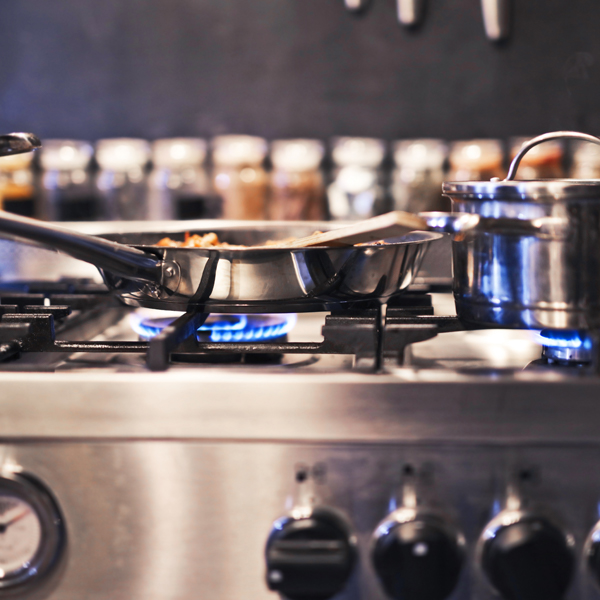
Stainless Steel
A preferred option for many chefs, but look for high quality stainless steel with 18/0, 18/8, or 18/10 to avoid possible nickel leaching into your food. The 18 refers to the amount of Chromium which gives the metal the rust-resistant quality. The second number refers to the amount of nickel so the lower the number, the better.
Most stainless steel pots and pans have an aluminum core on the bottom cooking area to keep the food evenly cooked. Make sure you get a quality brand with several layers covering the aluminum, so it will not penetrate through the steel.
Stainless steel is versatile and we use it often in our kitchen. We use stainless steel for our pots, sauce pans, baking sheets, and wok. Our Instant Pot also has a stainless steel pot. See our recommendations below.
Pros
- Lightweight
- Durable
- Great for high heat
- Heats quickly
Cons
- Need to buy quality stainless steel
- Need to be careful of nickel content
- Some foods tend to stick
- May require more oil
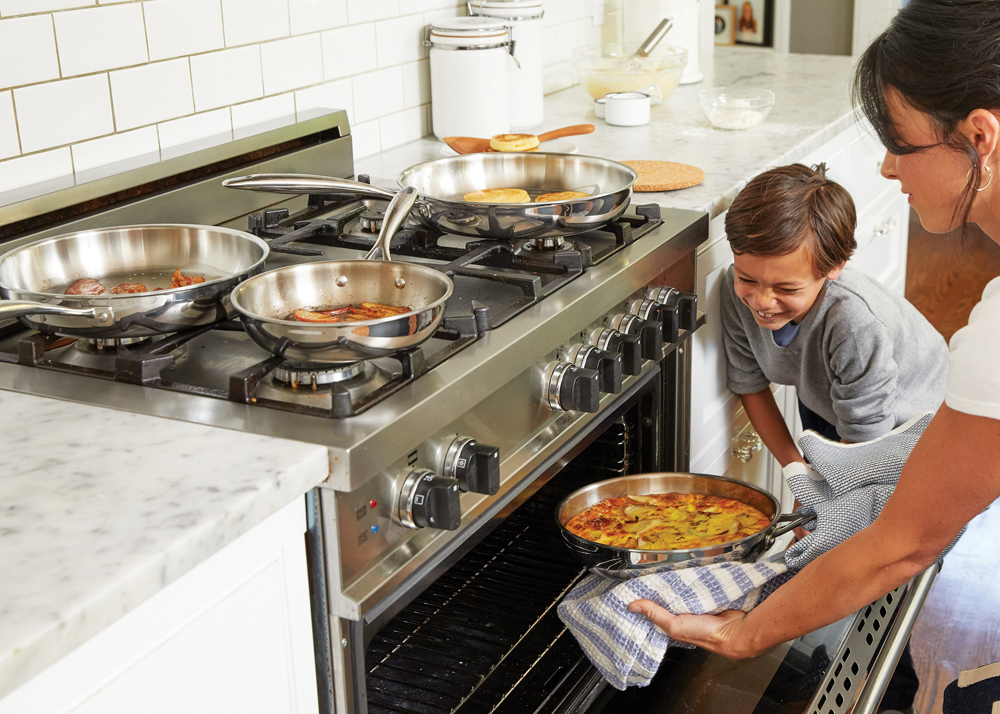

Leave A Comment